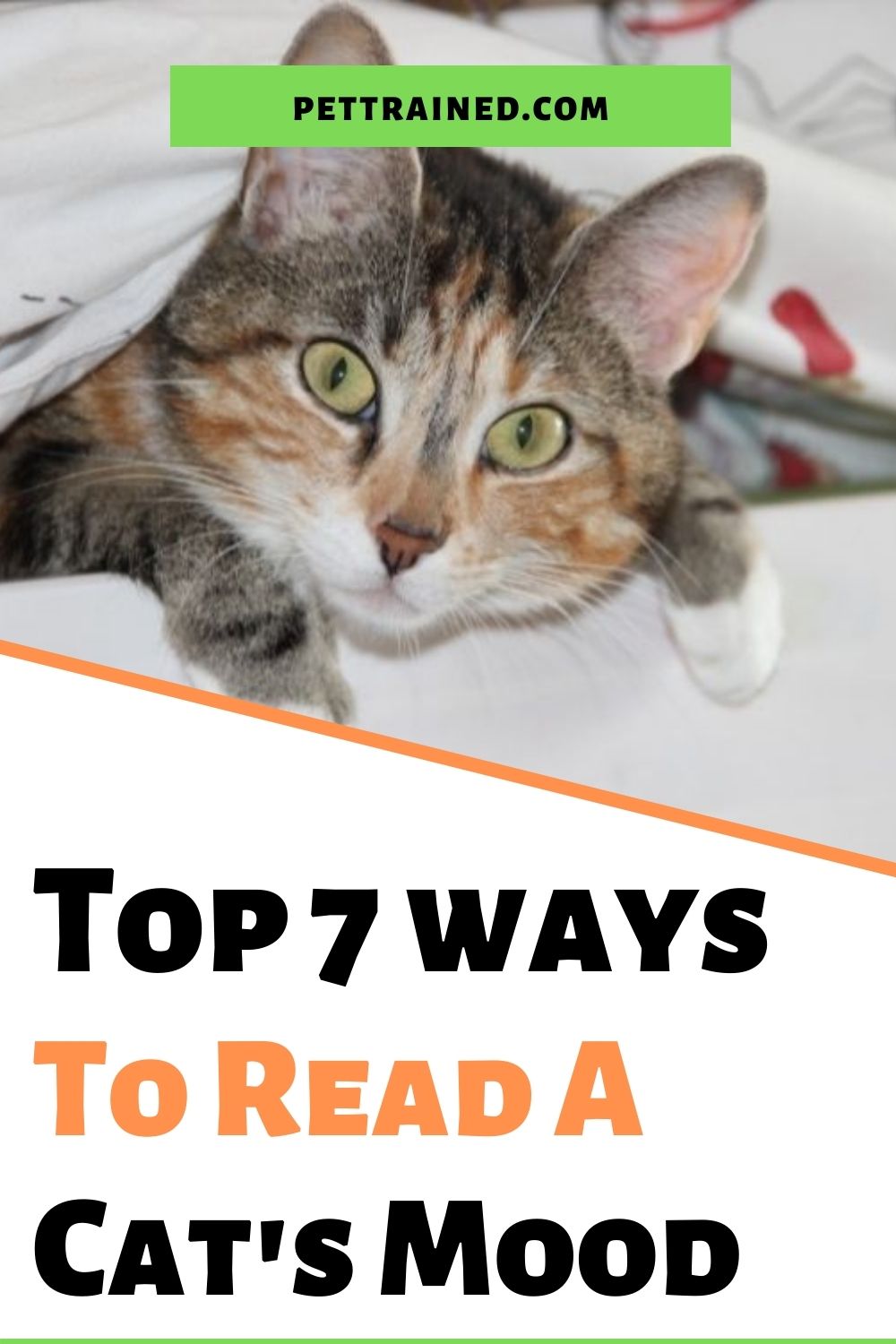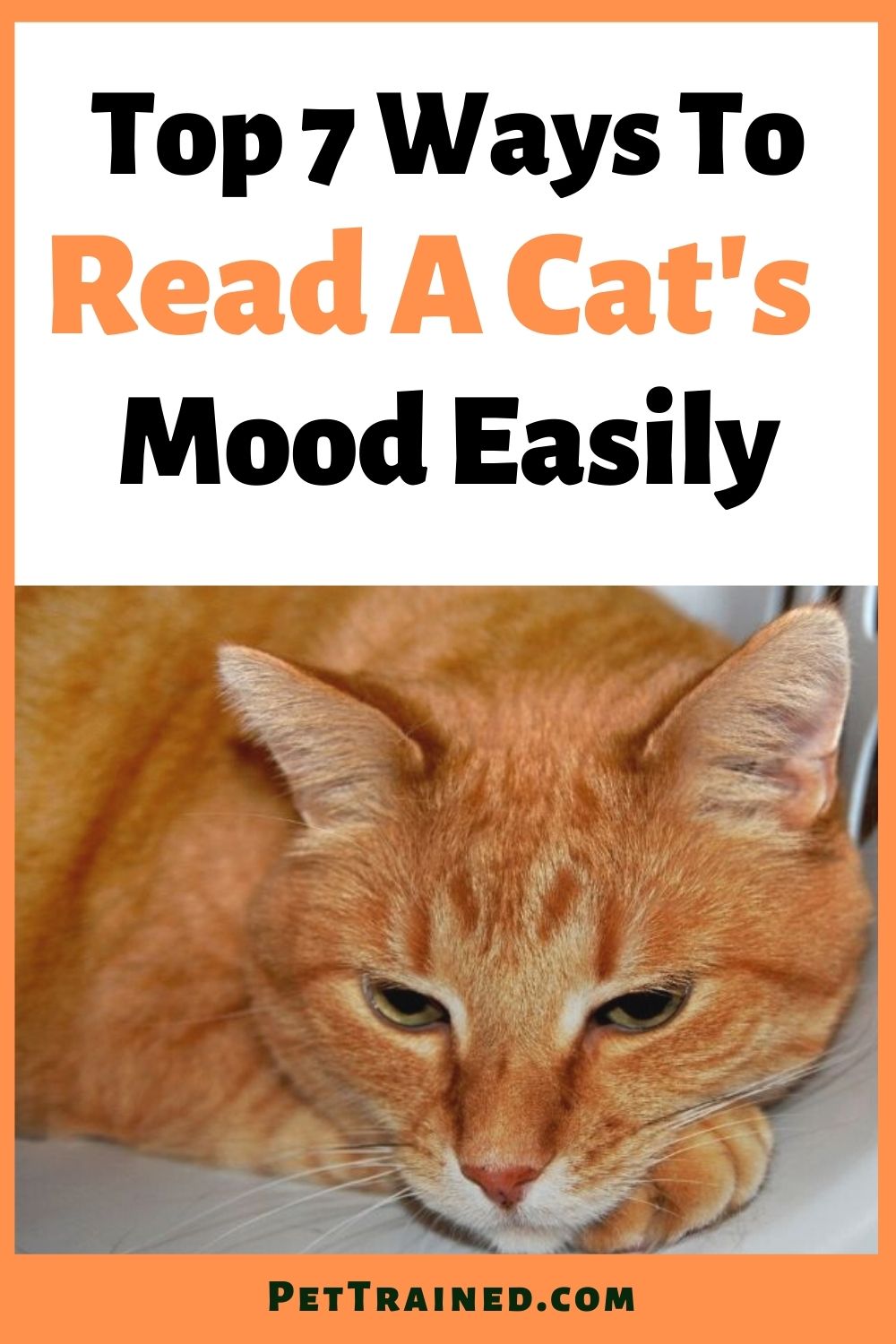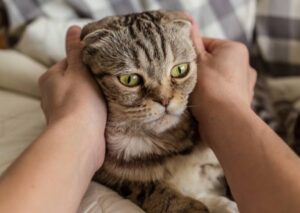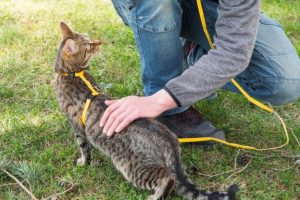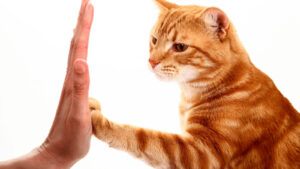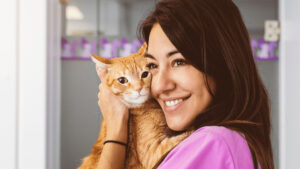As a caring pet owner, you should want to understand how to read your cat’s moods at all times. Is your pet happy? Sad? Loving? Scared? Hungry? Understanding your cat’s feelings will help you respond to your kitty’s behavior in the best way. Unfortunately, cats do not express their moods like humans so, reading them isn’t easy.
Nevertheless, not being easy doesn’t translate to being impossible; it’s possible to read your cat’s moods. I’ll be showing you top ways to read a cat’s mood in this article using seven everyday moods as examples;
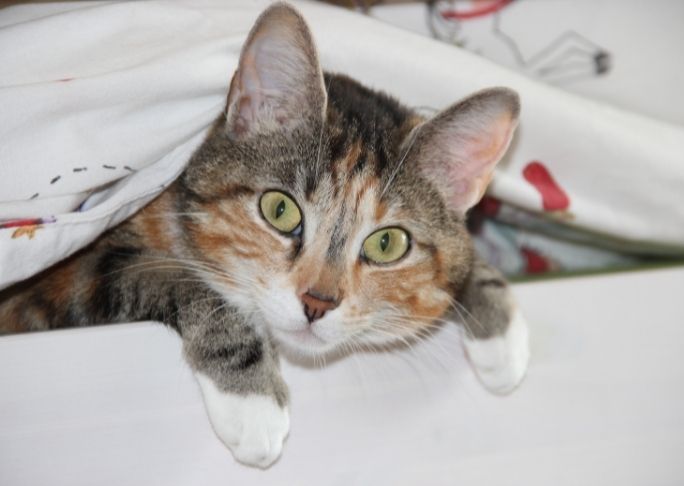
Table of Contents
1. Happy Cat Mood
Your cat is usually happy when it’s playtime, time to feed, or when you offer treats. If your cat loves you and you’ve done nothing upsetting, you can expect a happy cat whenever you come home.
Your kitty’s behavior is always calm when your cat is happy, with soft eyes and upright ears. Also, you’ll notice her tail standing straight up or hooked forward, especially when she’s happy about someone being around.
This post contains affiliate links. However all the information provided on this site are my own honest opinions. See more in Disclaimer.
If you’ve got more than one cat in the house, they could also groom each other when they are happy.
2. Sad Or Depressed Cat
When your cat is sad, she’ll be less active and less motivated to engage in her daily routine. If certain activities usually excite her, like play or feeding, she’ll be very disinterested; Basically, her mood would be dull.
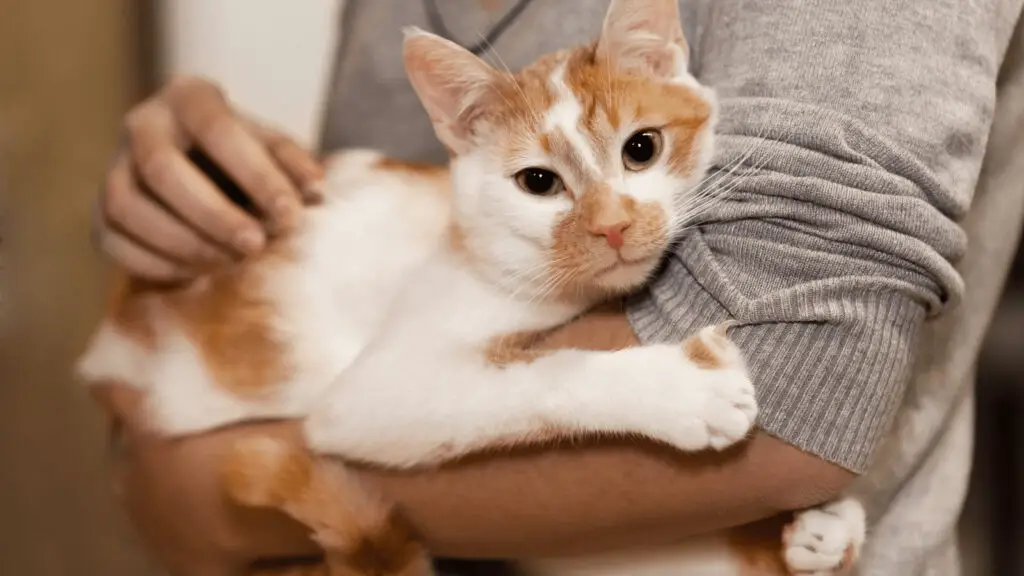
If your cat is a very vocal one, he’ll become quiet. For body language, you’ll notice ears held back and tail tucked. Furthermore, when your pet is sad, most especially depressed, your cat will sleep a lot most of the day.
Also, if it’s depression, she’s likely to scratch more than usual. See our articles on how to cheer up a depressed cat and how to make a cat happy here for practical tips to help you change your pet’s sad mood.
3. Angry Cat Mood
Do you think you’ve annoyed your pet? If you truly have, expect your pet to be in a very vibrant and, in some cases, aggressive mood. There are top signs to watch out for, including loud meows, biting, and scratching. See how to stop a cat biting and attacking you and how to apologize to a cat for more info.
However, the bites you experience when your cat is annoyed are usually warning bites and not very intense. Some cats will keep a distance, i.e., try to stay as far away from you or whatever is getting them agitated as possible.
Tail lashing and fast flicking are also signs that your pet is annoyed.
4. Scared Or Frightened Cat
Fear is somehow common for felines, especially younger ones. It could cause your pet to act aggressively as a way of self-defense.
You could see symptoms like flattened ears, dilated pupils, and inappropriate scratching. Scratching can be nasty for your home and furniture, so you may wish to see this article on how to train a cat not to scratch.
Furthermore, your pet could devise several means to stay stable. This behavior could include over-grooming or chasing the tail so this can be one of the ways to read a cat’s mood.
If your pet’s scared of someone, something, or a fellow animal, she’d hide whenever they’re around. If she’s not hiding, she won’t want to come around the person, thing, or pet and might run away if approached. Check out how to make a cat feel safe and holiday safety tips for pets to properly prevent and handle cats’ fear.
5. Hungry Or Starving Cat
A hungry mood is one of the easiest to read. When your pet is hungry, expect all kinds of disturbance. If you’re sleeping, your cat will wake you with high-pitched meows, which may not stop until your pet has a meal.
She might bring you her feeding bowl or continuously walk around her feeding spot. If she knows where you keep her food, she’ll try to get it herself in some cases.
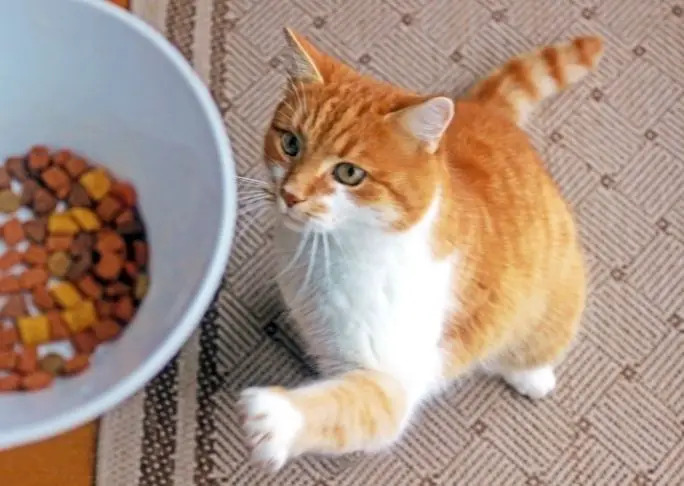
If she’s starving and there’s very little she can do about it; she could cry excessively. Also, note excessive thirst and hunger could be some of the symptoms of feline diabetes visit symptoms of cat diabetes for more information.
No animal should be hungry. Ensure your pet is well fed at the correct times. Be sure to follow the recommended guides for each cat food, as measurements can vary by brand. Also, see how to train a cat to wait for food to teach your cat to be patient and the best quality affordable dry cat food for quality meal options for your cat.
6. Loving Cat Mood
Although cats can be very independent, they are affectionate and can show love and demand love from their owners.
Your cat is in a loving mood if she slowly blinks at you, headbutts you, rubs her cheeks, purrs, or wants you to interact with her.
Also, your pet could like you or scratch you gently. Generally, cats are in an affectionate mood when open and trusting. Therefore, your cat looks for any opportunity to be around you. See our articles on how to make your cat love you and 8 Surprising Signs Your Cat Actually Likes You.
7. Aggressive Cat Mood
Several factors could make your pet aggressive. Consequently, there are different types of cat aggression. An aggressive mood is an unfriendly mood, so you should anticipate the worst of behaviors; it is not the kind of mood you’ll want your pet to experience for long periods.
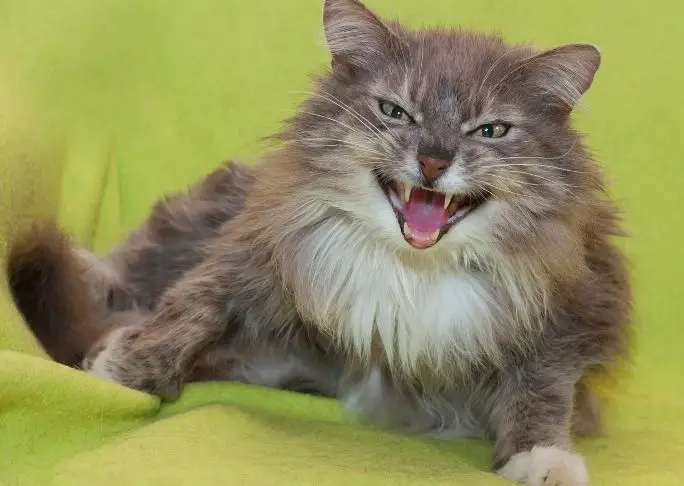
You’ll notice dilated pupils, she’ll growl, bite, scratch, and if the aggression is targeted at a fellow pet, it might result in a fight. If you’re the cause, she could attack you as well after stalking you for some time.
If you have an aggression problem, it could get quite dangerous. See our post on how to calm an aggressive cat here.
Conclusion
According to research published by BBC, cats can understand human moods by reading our facial expressions. They’ll behave differently in different situations. If your pets can read your mood, it’s only fair that you know how to read theirs.
While it might be difficult, it’s possible, and the seven ways to read a cat’s mood listed above will be of help. If you found this post on understanding your cat’s many moods enjoyable, please pin and share it with others on Facebook and Twitter.
